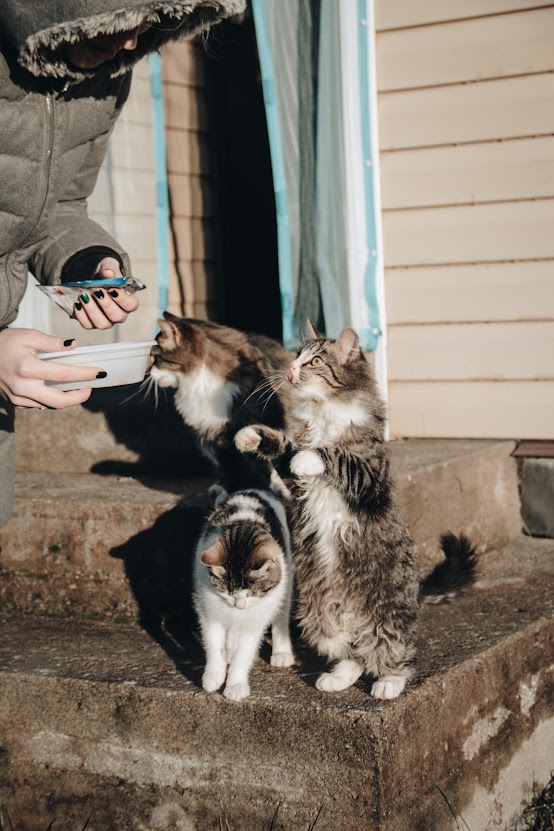7 Amazing Polydactyl Cat Facts
Cats with polydactyly are born with extra toes on each paw than is typical. Polydactyl cats can have six (or more) toes on each paw, whereas most cats have five toes on their front paws and four on their hind paws.
The genetic anomaly polydactyly, which causes additional digits, is more prevalent in some areas of the world than others. Any cat breed, whether male or female, large or small, can be impacted.
Continue reading to find out more about the hereditary causes of polydactyl and to see some gorgeous pictures of polydactyl cats.
1. A Genetic Mutation Causes Polydactyly
A genetic mutation in a dominant gene leads to polydactyly, which often manifests as anywhere from four to seven extra toes on a cat's paws. Although polydactyly can afflict the hind paws as well as the front ones, it is highly uncommon for a cat to have polydactyly on all four paws.
Polydactyly is often not harmful to a cat's health or well-being. There are lots of content, healthy cats with a few extra toes, but it can make nail-trimming your cat a little more labor-intensive. If you've ever tried, you know how challenging it is.
It's crucial to remember that feline radial hypoplasia, which is sometimes mistaken for polydactyly, can be exceedingly harmful to a cat's health. Feline radial hypoplasia results in the growth of additional toes, similar to polydactyly.
The primary distinction is that the additional toes arise right next to the cat's regular toes, giving rise to enormous, flat feet. Breeding feline radial hypoplastic cats can result in severe paw abnormalities in future generations.
2. There Are Some Cats With "Mittens"
Mitten paws are created when an extra toe develops in the middle of the paw of a polydactyl cat, giving it a thumb- or mitten-like look. These extra digits are not opposable, despite the fact that they resemble thumbs.
3. Some Cats Can Benefit from Polydactyly
In addition to being adorable, cats with polydactyl toes also benefit from having them. Because of their wider, more giant paws, polydactyl cats are better able to balance on different surfaces, climb, hunt, and catch their prey.
If you have a polydactyl cat, be sure to get it a scratching post or board and account for all of its toes when you cut its nails. Your furnishings may suffer greatly from those extra toes.
4. Cats With Polydactyles Are Seen as Lucky
Polydactyl cats are just one of many cat breeds, like black cats and calico cats, that were thought to be lucky for sailors. Once upon a time, polydactyl cats were a common sight on lengthy ship voyages.
Polydactyl cats made great mousers and could maintain the ship's supplies pest-free because of their broad, wide paws. Additionally, in rocky seas, their paws provided stability.
The most common locations for polydactyl cats are Western England, Wales, Canada, and the Eastern United States. Their predominance in these areas is frequently attributed to their time spent on transcontinental ships.
It is thought that cats with polydactyls in England were brought across the Atlantic Ocean, where they mated with cats without the trait and spread it genetically.
5. Polydactyl cats were beloved by Ernest Hemingway.
Have you ever wondered why Hemingway cats, which are polydactyl cats, are commonly used as examples? Because Ernest Hemingway adored them, that is. Ernest Hemingway fell deeply in love with polydactyl cats after receiving Snow Ball, a white one, as a gift from a ship's captain.
His Key West, Florida home was turned into a museum and a place for his cherished cats after he passed away in 1961. About 50 descendants of his original pack of cats still reside in the cat colony, with about half of them being polydactyl.
6. The Maine Coon Cats Were Extremely Prone to the Illness.
Maine coon cats have huge, insulated paws that act as tiny, built-in snow boots since they evolved in Maine's harsh, snowy circumstances. Additionally, polydactyly was fortunately rather widespread in the breed at one point, with roughly 40% of Maine coons having additional fingers. 2 Why is it fortunate?
Maine coons' polydactyly provided them broader, wider paws with more insulation to navigate the unfriendly terrain.
Although polydactyly has been bred out of many Maine coon cats in modern times, some cat enthusiasts still recognize the polydactyl Maine coon breed.
7. The world's toes are owned by one cat.
The record for having the most toes is now held by Jake, a polydactyl ginger tabby, according to the Guinness Book of World Records.
Jake has seven toes on each paw, totaling a staggering 28 toes, each with its own claw, pad, and bone structure.











